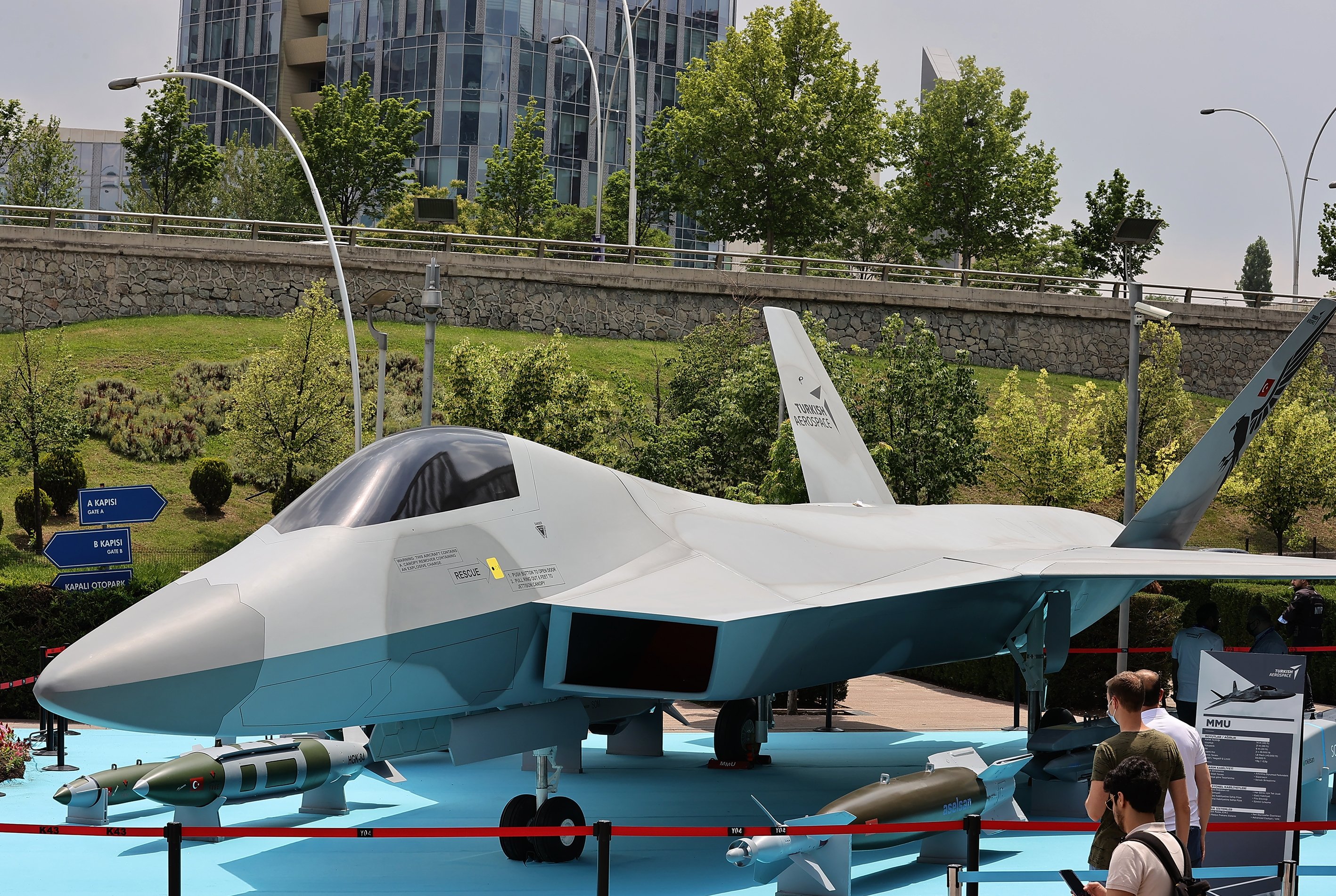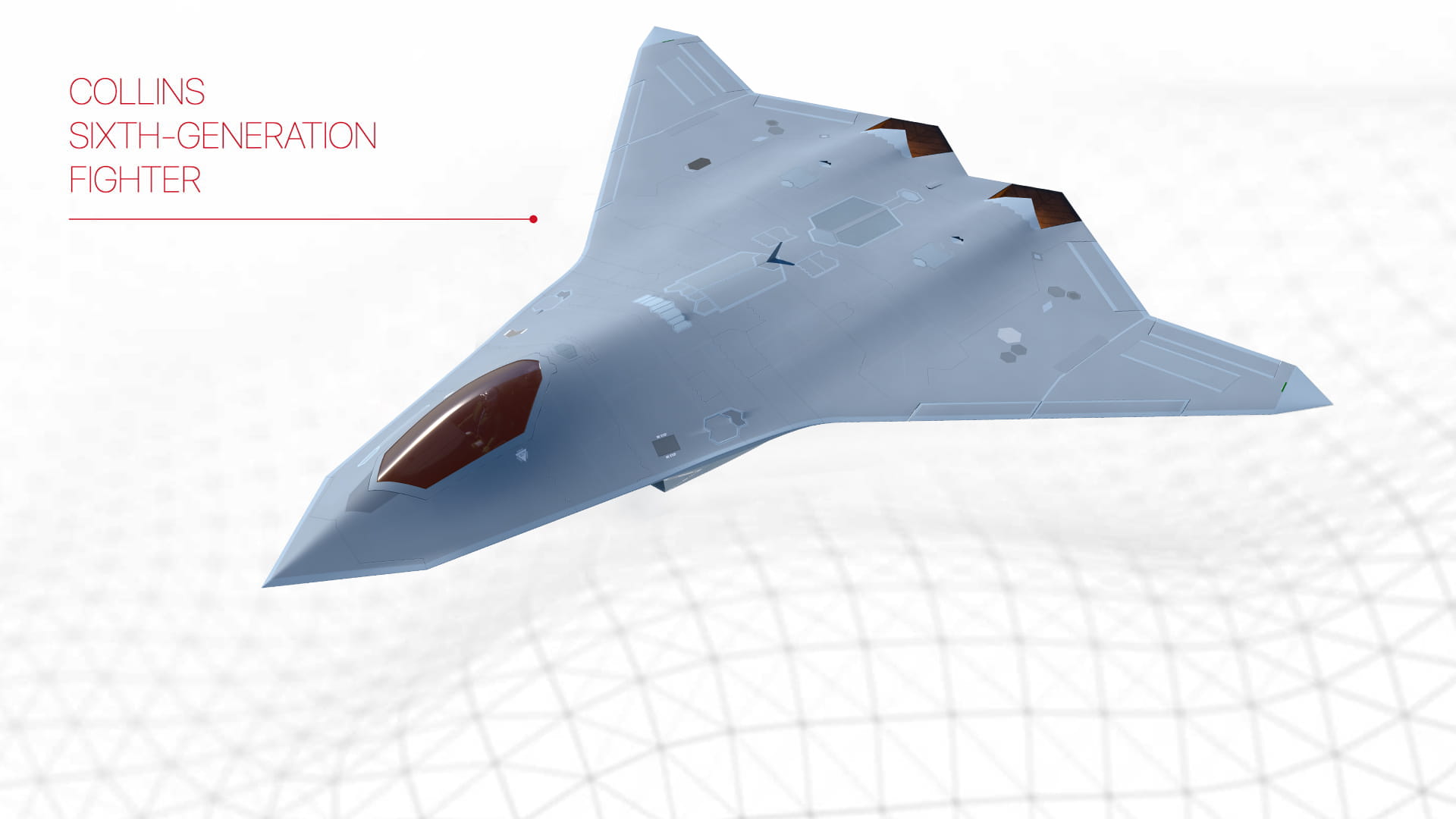6 Gen Fighter - While some countries are developing fifth-generation fighters, the most advanced to date, manufacturers around the world are already defining the future of air warfare. Let's look at the most promising ones to try to explain what the sixth generation fighters could look like.
In the early 2000s, Lockheed Martin introduced the so-called fifth generation fighters with the F-22 Raptor. Warriors of this generation share several common traits:
6 Gen Fighter

It is important to note that these features, as well as the whole idea of a generation of fighters, have been criticized simply or as a marketing argument for Lockheed Martin by some of its competitors. For example, the concept of stealth remains a controversial area as some consider it too disruptive to airframe design and performance in general, although it is easily captured as sensor technology advances.
Light Sixth Generation Fighter On Behance
Over the past five years, several ideas for a sixth-generation jet fighter have emerged from aircraft manufacturers around the world. While many of these are still on the drawing board, a quick look at the specifications and strategies of the most promising gives an interesting picture of where the industry is headed.
According to the Air Superiority 2030 report published in 2016, it was necessary to create a new fighter aircraft capable of replacing the F-15 Eagle and F-22 Raptor. Thus was born the Next Generation Air Dominance (NGAD) program, which aims to create a "Penetrating Counter Air" (PCA) combat aircraft as well as a "capability family operating in air, space and cyberspace".
This new aircraft would need to have a long range to reach theaters far away without fixed areas such as the Pacific. With the increasing availability of Anti-Access/Area Denial (A2/AD) systems, supersonic speed and encryption also become a necessity.
To meet its strategic needs in the short term, US Air Force Secretary Will Roper said the program could be inspired by the Century Series Fighters, which led to the development of less than six fighters (and two were cancelled). projects) in less time. over six years in the 1950s: F-100 Super Sabre, F-101 Voodoo, F-102 Delta Dagger, F-104 Starfighter, F-105 Thunderchief and F-106 Delta Dart, all of different types. producers.
Sixth Generation Fighter On Behance
Development of the "Digital Century Series" would reduce aircraft production every five to six years and use the latest technology available. Each aircraft can be upgraded with a unique ability, where one uses a motorized weapon and the other focuses on electronic warfare. This would allow them to act as a network capable of countering all kinds of threats.
Boeing, Lockheed Martin, and Northrop Grumman have all announced they are conducting pilot studies pending a formal request for proposals from the USAF.
After relying on Sukhoi for its last Su-57 platform, Russia may return to its other engineering center, Mikoyan-Gourevitch (MiG), to develop the sixth-generation jet fighter. At least this is what the manufacturer has presented since 2017.

However, Mikoyan did not create new combat aircraft since the MiG-31, which entered service in 1981. CEO Ilia Tarassenko is optimistic in the face of critics. "This is not a fictitious project, it is a project started long ago by MiG. We are doing this work intensively under the supervision of the United Aeronautical Consortium (UAC) and will soon present the results to the general public." he told reporters.
Here's What A New Sixth Gen Fighter For France And Germany Could Look Like
As before the Cold War, the MiG-41 is expected to be a fighter. But to adapt to the threats of this new century, it has to show exceptional performances. For example, a plane should be able to land in space… sort of. In fact, according to its manufacturer, it can switch between the stratopause and tropopause between 9,000 and 17,000 meters above sea level - slightly below the MiG-25 and SR-71. they can. Its top speed of 3,675 km/h (2,300 miles per hour) enables it to fire hypersonic missiles.
The MiG-41 was expected to enter service in 2030. However, the latest UAC strategic map shows that the priority for the 2030-2035 period is the recently announced Sukhoi Checkmate, a new light/fifth-generation mid-range fighter.
During ILA Berlin 2018 in April 2018, Dassault Aviation and Airbus, together with their respective governments, announced an agreement to collaborate on the development of the Future Combat Air System (FCAS), which should replace the Dassault Rafale and Eurofighter Typhoon. In January 2019, Germany and France joined Spain with the industrial sector of Indra Sistemas.
Like its American counterpart, FCAS plans to create not only a new aircraft (Next Generation Fighter, NGF) but also a "system" that sees the fighter plane interacting with other elements, such as a number of support drones called Remotes. The airlines are creating what was unveiled at the 2019 Paris Air Show as the Air Combat Cloud (ACC). Airbus and MBDA are both looking for ideas for such drones.
Th Generation Fighter Hi Res Stock Photography And Images
Three months after the official launch of the FCAS project, the UK unveiled a sixth-generation fighter project called Tempest during the Farnborough Airshow in July 2018. As described in the Combat Air Strategy, the aim is to replace the Royal Air Force's Eurofighter Typhoon. Effective in 2030. Italy joined "Team Tempest" in September 2019. The program now also includes BAE Systems, Leonardo UK, MBDA UK Leonardo Italy, Rolls Royce, MBDA Italy, Avia Aero and Elettronica Group.
Like the two aircraft presented above, the Storm should also be supported by a series of drones and share information with other assets on the battlefield, giving it the so-called Cooperative Engagement Capability (CEC).
Sweden has signed a memorandum of understanding for Saab to explore "a joint program for the development and acquisition of fighter jets, including the development of new ideas for the needs of both countries."

Japan is also actively seeking to join the program as a partner to strengthen the F-X program led by Mitsubishi Heavy Industries.
Acc Commander Fears That The Us Won't Have The “courage” To Field A 6 Gen Fighter Before China And That F 35 Flying Costs Won't Hit $25,000 Per Hour Target
China is one of the few countries in the world that has deployed fifth generation fighter jets. The Chengdu J-20 stealth fighter was officially put into service in February 2018. However, there are doubts about its effectiveness, especially against its US counterparts. The F-22 and F-35 have already appeared.
A year after the introduction of the J-20, the Global Times had already reported that China had begun developing a prototype of the next-generation fighter jet. An official at the Chengdu Aircraft Research and Design Institute said it aims to develop it by 2035, if not sooner.
The program was confirmed by US Air Force Chief Mark Kelly, who said progress was "on track".
Not much is known about China's mysterious plan. The planes are rumored to be capable of piloting drones and relying on artificial intelligence like their Western counterparts.
Future Combat Air System
Given these few examples, a rough sketch can be made to show the improvements or differences between fifth and sixth generation fighters:
From clamp kits to assemblies, the word "system of systems" became a mantra when talking about sixth-generation fighters. Proposed ideas betting on the development of artificial intelligence try to keep pilots and their expensive machines out of the action, preferring to rely on cheap "idle wings".
According to Dassault Systèmes' director of aerospace and defense solutions, Enrico Scharlock, the "system of systems" concept and the way next-generation fighters are developed goes beyond design and ensures interoperability - cooperation between allied air forces.
"The strategy of coordinated operations applies not only to national security forces, but also to the entire NATO alliance," Sharlock said. "To standardize system design, the NATO Architecture Framework is being developed, which provides standards for the development and specification of enterprise architectures for military applications. The purpose of NATO Architecture Framework Version 4 (NAFv4) is to provide standards for the development and specification of enterprise architectures intended for military use and commercial applications. The NATO Architecture Framework provides guidelines for the specification of enterprise architectures and system architectures.
Where Does India Feature 6th Gen Fighter Race?
"Design projects are a way to organize and present plans to stakeholders, ensure consensus, compare and integrate plans, which serves as an important tool in finding and developing non-functional and functional capabilities, coordinating with reference to the architectures produced by international standardization organizations such as the International Organization for Standardization, Institute of Electrical and Electronics Engineers, Open Group, Group of Material Management, etc.
With an estimated deployment date of no later than 2035 and a delay in fighter jet programs, new technologies over the next decade could change the game and give it a different face. entirely for sixth generation fighters.
By checking this box, you confirm that you have read and accepted our privacy policy
Lockheed martin 6th gen fighter, lockheed 6th gen fighter, gen 5 fighter jets, next gen fighter jet, gen 6 fighter, gen 4 fighter jets, northrop grumman 6th gen fighter, air force 6th gen fighter, air force next gen fighter, usaf 6th gen fighter, sixth gen fighter, 6th gen fighter
0 Comments